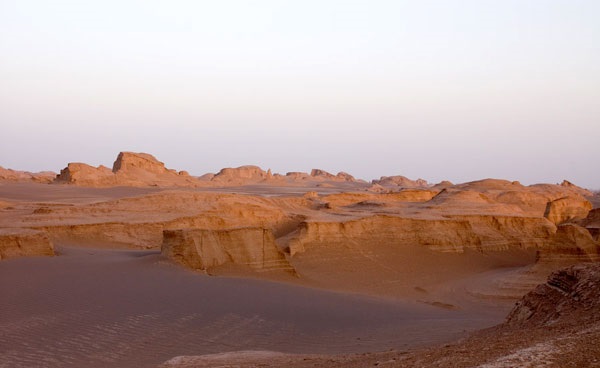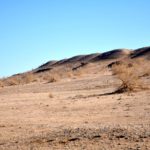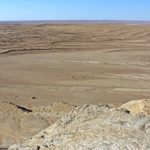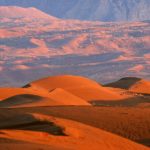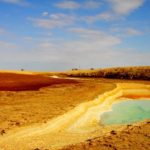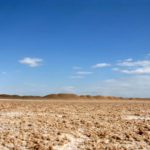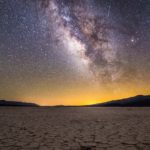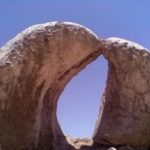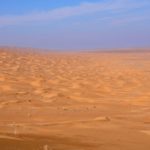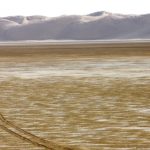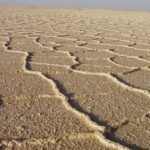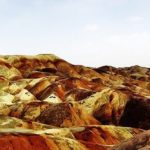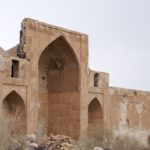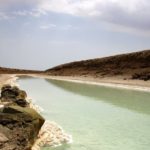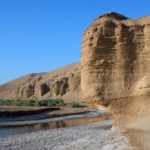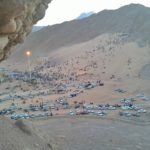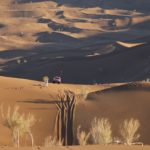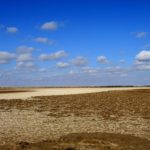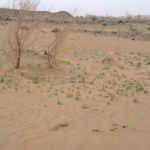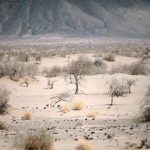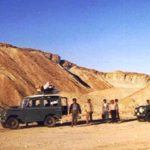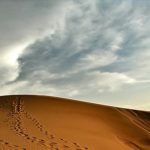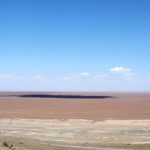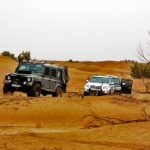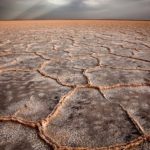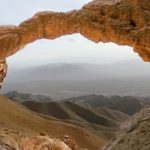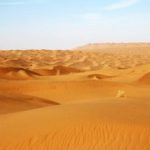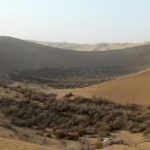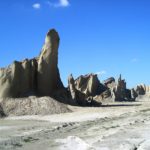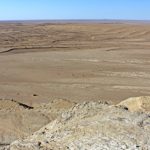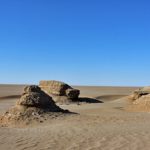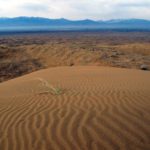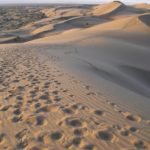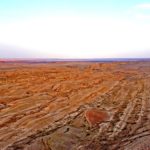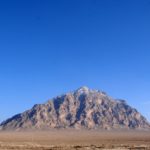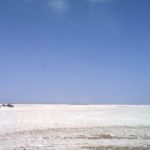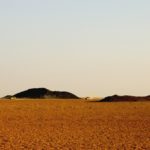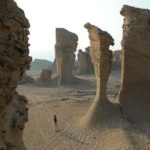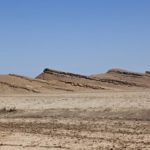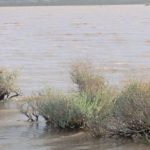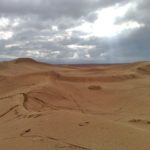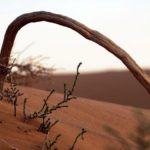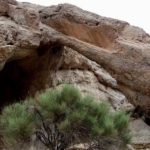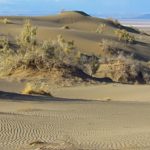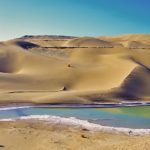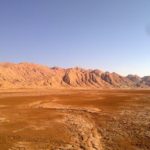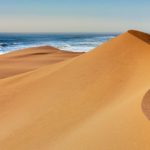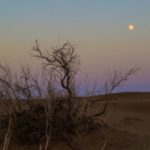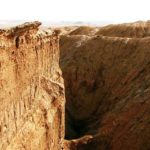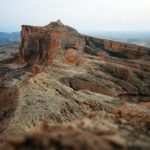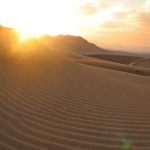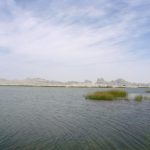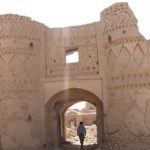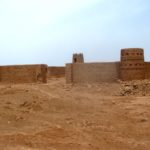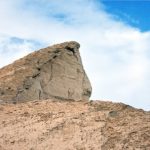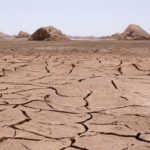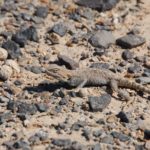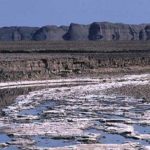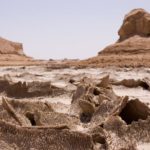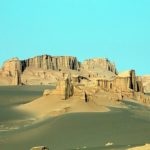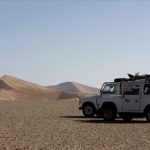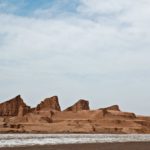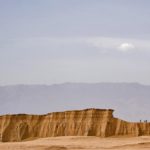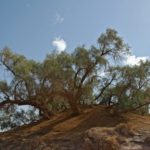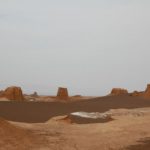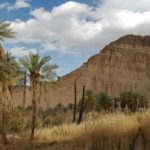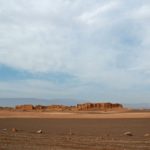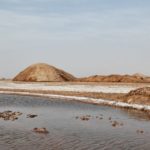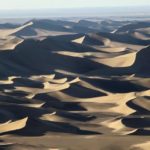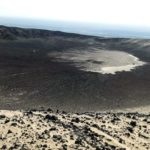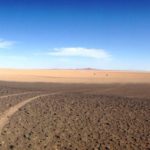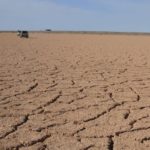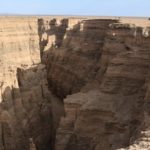The year we are in, at the suggestion of the UN Secretary-General, has the name “Desert and Desertification” on its forehead. Desertification is the third challenge facing mankind in the third millennium, and it can be argued that more than any other independent, destructive and declining factor, the most promising ideal of contemporary times, “sustainable development”, faces serious challenges and slogans. Is ridiculed. In the meantime, the threat of desertification in the land of Iran, a country whose vulnerability and instability seem to be more critical than ever, is not only at the regional level but more promising and dangerous across the globe than in most other countries.
Read More ...
89.7% dry land dominance, gross deficiency of world-wide averages, abnormal distribution of population centers and its incompatibility with water reserves of the country, its gross climate change coefficient from long-term annual averages, unexplained poverty indices of all five (Ecological, habitat, economic, social, and cultural), together with the country’s strong desire to develop and offset the often imposed backwardnesses at any cost, are part of the most important cause of the devastating acceleration of desertification across our shared and dear homeland. However, we think that these arid lands and these desolate and vast deserts and deserts, which may not be as naked, enjoy other and lesser-known riches that are immense and enormous in comparison to what we have lost. They are valuable; the riches and benefits that are just enough to see and enjoy, as we have always stood, shaken and changed our perspective.
Thus, in order to document and depict the deserts and the central deserts of the country, I have led a team of colleagues from the Institute’s desert research department (Hamid Reza Abbasi, Amar Rafiee Imam, Farhad Khaksarian, and Mohammad Azadin, the name of the colleague. Traveling with us.) To make our way to the hottest recorded spot on Earth – a journey full of exquisite and unique sights we first experienced, and thanks to the comprehension of this precious experience, we have been and continue to be the kind Lord; Which once again showed us the desert except the sun and Wind, salt and sand have a lot to say, breathtaking landscapes to see, strange sounds to hear, a faint aroma to smell, and an unmatched feeling to understand … and this may be the prelude to the change in vision.
The expedition was organized in the first round of the mission to visit the known and known wilderness of the Lut Desert and traveled more than 4,700 kilometers on Wednesday morning, April 16, 2006 from the Tehran-Qom-Kashan freeway. Passing through Nain, Yazd, Rafsanjan and other cities on the way to Kerman on Thursday at noon, and after consulting with the officials of the Kerman Agricultural and Natural Resources Research Center (Mr. Tughreli and Dr. Arabzadeh), a visit to the western half of one of the most famous deserts The world was set for the coming days.
Shahdad area east of Kerman, Ravar north of Bam and Fahraj and Mohammad Abad Reagan to Jiroft and Kohnouj in the southern most diverse and large province of Kerman, the most visited areas of the group were identified, areas to visit without a doubt heard, , My thoughts and experiences have a deep and lasting line to the body that I don’t think will be easy to clear from my mind.
Loot Desert Location
28 to 32 degrees north latitude, 900 km wide and between two long faults and the Nehbandan Index in the east and Nayband in the west, in a strip 300 km wide, a vast land of 199,000 square kilometers (more There are six provinces (Golestan, Mazandaran, Gilan, East Azarbaijan, West Azarbaijan and Ardebil) that comprise a major share of the largest central and eastern provinces of the country, namely: South Khorasan, Sistan and Baluchestan and Kerman due to difficult climatic conditions and Its unique effects – the deepest indoor hole with 190 meters above sea level and the hottest point in Korea Earth at 100 degrees Celsius – one of the most famous natural deserts in the world – a desert called Lute Desert, where parts of it are not even bacterial, and have therefore been described as the only non-living infestation on Earth. A land that still has many naturalists, explorers and paleontologists (traces of human habitation have been observed at the foot of the Lut Desert in the fourth millennium BC). The world is eager to visit and navigate it all, a dream that has not yet come true. It is also known as the Loot Desert under various names such as the Lout Hole, the Lout Plain and the Lout Desert.
Visit the legendary Shohadad Whales
Shahdad is the name of the largest and longest-lived population area of the Lut Desert, which was referred to in the distant past. A city that, according to the welcome signboard, should have a population of 8,000, but now has less than two thousand permanent residents, according to residents. The collapse of citrus campuses and many of the region’s palm groves caused by severe and prolonged droughts in the last decade, plus intolerable heat, recorded last year in Shahdad and Dehif, up to 60 degrees Celsius, are among the most important reasons for this forced migration. As. It is noteworthy that Shahdad, 430 meters above sea level, is one of the parts of Kerman city that covers more than 4,000 square kilometers. The city is located east of the Kerman Highlands on the alluvial plain of the “Four Forsakh Valley”. The ancient and numerous caravans that were the city’s most important water sources, citrus groves and gardens, as well as the works of Arata’s 6,000-year-old civilization, are the sights that truly take in the breathtaking nature of the wilderness. Interestingly, the heat affected the Shaddad people, who were still using heaters for 40 kilometers, in Sirch, and even the day we left the area witnessed heavy rainfall and even snow at its height. Whereas, in the desert camp of the Cloisters, the air temperature was over 35 degrees Celsius.
Another of Lut’s exceptional effects is the world’s largest nebkas on its western edge. About 20 kilometers from Shahdad, Gaz trees and shrubs are housed in the Lut desert pots, which are called nekba or vegetable traps. Nebkas are near the hottest spot in the world, and sometimes reach 10 meters in length. At the same time, the height of Africa’s tallest desert nebbs reaches three meters. The fields between the nebkas are covered with sand. Nebkas generally grow at a flat level with moderate sand and high groundwater levels or sufficient moisture for plant growth. Nebka’s constituent elements include sand, silt, clay and silt. The shape of the nebula is a function of the size, density and growth rate of the host plant. In the Lute Desert, Tamarix is one of the major host species of nebkas.
However, it should not be forgotten that no other area in the western margin of the Lut Plain, except the Bam region, had as much permanent water and therefore had the largest human settlement around Shahdad (Khabis) for thousands of years. Is. It is worth mentioning that from the east side of Shahdad to Lut plain is about 2 km and overlooks a plain called Takab which forms the main part of Khabis. The permanent water of Shahdad is supplied from the Dardanang River. The river originates from the He-Naman heights and traverses through the Valley of Trees, diverting to the north at the entrance of the Four Fars Gorge, and then flows through Lut Abad.
In the Lut Desert, forty kilometers northeast of Shaddad, and over an area of over 2,000 square kilometers (average 1 km wide and average 2 km long), there are certain uneven areas called cloaks, which are the largest natural and climatic events in the world and the most unique. They are desert. Remote to the ruins of large urban ruins with short and tall buildings, narrow and wide alleyways, dome and towers, and of course there is no city! But widespread water and wind erosion in the area has exposed unprecedented visual demonstrations, referred to as “the legendary city of the Clouds” or “the imaginary city” or “urban deserts” and the viewer has been immersed for hours. She will be amazed. Surprisingly, it still has not left the group members like hundreds of Iranian tourists and tourists before.
Another unique feature of Lut, in addition to having the world’s largest whites and nebkas, is that many scholars, including Farajollah Mahmoudi and Parviz Kordwani, professors at the University of Tehran, also hold the Earth’s warming pole. It is also known as the hottest spot on earth by recording a temperature of 2 degrees Celsius.
The country’s Cultural Heritage and Tourism Organization has been setting up a desert camp in what has been called the “Cottoes” for about three years, alongside Lot’s cloaks. Koto means locust in the local language. The Cotto site is made up of traditional Cotto sites to show tourists how to escape the heat in the desert. “More than a billion dollars has been spent here,” says a single Camp Guardian. But it seems that in the current situation, the protection and protection of what has been built has not been prioritized, and almost this national capital has been abandoned. At the time when officially named 2006 is the year of tourism of Shahdad. It is worth noting that the campground has cementitious surfaces, walls and a wooden roof and is equipped with facilities such as electricity and toiletries.

